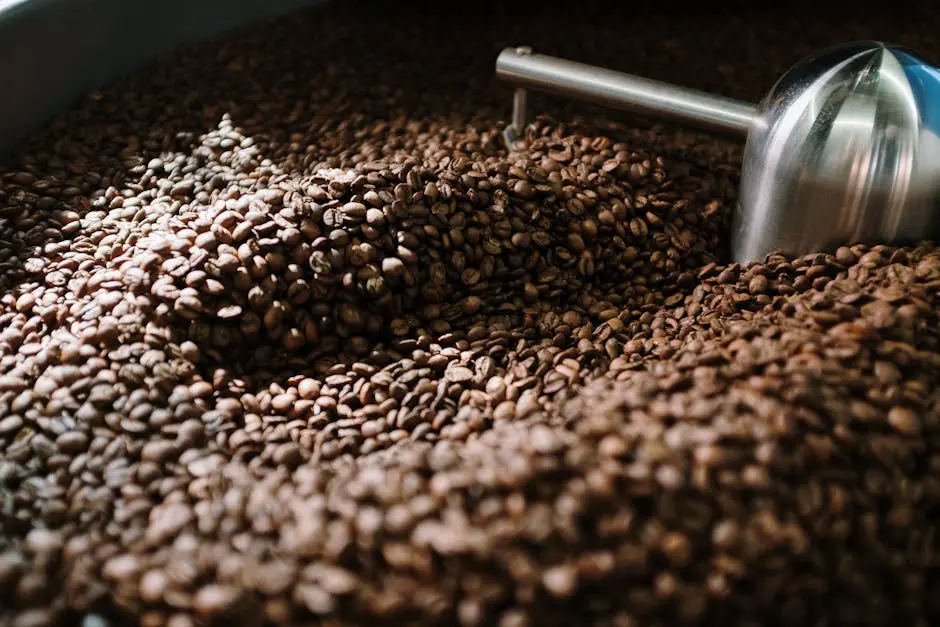Decaf coffee has come a long way since its inception, transforming from a mere caffeine-free alternative to a beverage cherished for its own distinct flavors. In this blog, we’ll explore how decaf coffee is made, understanding the processes that ensure it maintains its delectable taste without the caffeine punch.
Unraveling the Origins of Decaf Coffee
The story of decaf coffee began in the early 20th century when Ludwig Roselius discovered a way to remove caffeine from coffee beans. This innovation opened up new possibilities for coffee lovers looking to enjoy their favorite drink without the late-night jitters. Roselius’ method paved the way for modern decaffeination techniques and further established decaf coffee as a staple for those sensitive to caffeine or simply preferring its absence.
Decaf coffee quickly spread through Europe and the U.S., marking the beginning of a new chapter in coffee culture. Early techniques, like Roselius’ use of solvents such as benzene, have since been phased out due to health concerns. Over time, methods evolved to create safer, more effective processes for removing caffeine from green coffee beans. These innovations not only improved the quality of decaf coffee but also broadened its audience, leading to an ever-growing demand as consumers sought caffeine alternatives for various lifestyle needs.
This demand catalyzed numerous advances in decaffeination. Today, consumers prioritize flavor and quality in their caffeine-free beverages as much as in any conventional coffee. Companies have responded impressively by developing methods that preserve the integrity of coffee’s natural taste. As more people embrace healthier living, decaf coffee is becoming an integral part of that experience, proving to be not just a trend but an enduring choice for coffee lovers seeking balance and well-being.
Decaffeination Methods: A Closer Look
The process of decaffeination is crucial to preserving the flavor of the coffee. The Swiss Water Process, one of the most renowned and natural methods, involves soaking green coffee beans in hot water and using carbon filtration to remove caffeine while retaining other essential flavor compounds. Developed in the 1930s and commercialized in the 1970s, this method exemplifies how scientific advancements have contributed to creating higher-quality decaf coffee, keeping the essence of the beans intact.
Meanwhile, the CO2 Process, also known as the ‘supercritical carbon dioxide process,’ uses liquid CO2 under high pressure to extract caffeine. This technique preserves the flavors of the coffee while removing its caffeine content. It’s especially prized in the production of both specialty coffees and commercial-grade products, leading to an exciting exploration of the nuanced tastes that define high-quality decaf.
Other methods, such as the Mountain Water Process, utilize osmosis and carbon filters combined with specialized techniques to craft flavorful decaffeinated beverages. These diverse processes ensure a premium experience for consumers who value both taste and caffeine content control. Decaf enthusiasts now benefit from state-of-the-art decaffeination methods, allowing them to enjoy the rich complexities of coffee without experiencing its typical energizing effects.
These decaffeination techniques represent a blend of science and artistry, with constant advancements pushing the boundaries of what decaf coffee can offer. As consumers’ tastes and environmental consciousness evolve, so do the methods, ensuring that the modern decaf experience remains an unparalleled journey of flavor exploration and dietary preference satisfaction.
The Flavor Profile of Decaf Coffee
Contrary to popular belief, decaf coffee can offer a rich and complex flavor profile. Join us as we explore various decaf coffee beans and discuss how subtle flavor notes can still shine through in a well-crafted cup. The intricate journey from bean to decaffeinated beverage maintains much of the original bean’s essence. From the nutty undertones of Brazilian Cerrado to the fruity citrus notes of Ethiopian Yirgacheffe, these profiles illustrate the diverse range available to decaf enthusiasts.
Crafting a flavorful decaf coffee involves thoughtful selection and careful roasting processes. Companies prioritize fresh and meticulously roasted beans to preserve the integrity of the flavors. This dedication to quality means that when you’re sipping on a decaf blend, you’re engaging with a thoughtfully curated profile that mirrors the artistry involved in making any exceptional coffee.
Brewing the Perfect Cup of Decaf
Making an excellent cup of decaf doesn’t require special equipment, but certain brewing techniques can enhance its taste. We’ll provide tips and tricks to brew decaf that’s bursting with flavor, whether you’re using a French press, drip coffee maker, or espresso machine. Paying attention to grind size, water temperature, and brew time can dramatically impact the final taste of your decaf cup.
To achieve the best results with decaf, opt for a slightly coarser grind for methods like French press and a finer grind for espresso. Keep your water temperature between 195°F and 205°F for optimal extraction. This range allows the water to draw out the flavors without over-extracting any bitter compounds, which is crucial in getting the most out of your cup of decaf coffee.
For those excited to dive deeper into the world of coffee flavors, the Art of the Bean and Leaf’s blog is a fantastic resource filled with interesting insights. You’ll find a treasure trove of tips and introductory lessons that guide you through various brewing techniques. Brewing at home gives you the freedom to experiment and fine-tune your decaf brewing process, resulting in a richer and more enjoyable coffee experience, all without the jitters that caffeine brings. Whether you’re a seasoned coffee lover or just starting to explore decaf options, there’s something for everyone to savor in this delightful caffeine-free journey.
With these tips and a bit of practice, you can enjoy a full-bodied, aromatic cup of decaf coffee that rivals any caffeinated brew. Each sip becomes more than just a drink—it’s an experience guided by an appreciation for the full spectrum of flavors decaf coffee offers.
Savoring the Caffeine-Free Experience
Understanding the journey of decaf coffee from bean to brew reveals the intricate processes that preserve its flavor and quality. Next time you sip on a cup of decaf, you’ll appreciate the craftsmanship and care that went into creating your caffeine-free delight.


